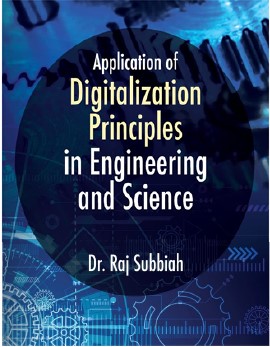
The industrial evolution has reached a new stage following the mechanization in the 18th century, electrification later in the 19th century, and automation a century later. What is being called Industry 4.0 is the result of the ongoing process of digitalization that we’re experiencing today.
This is affecting all aspects of our lives, including the electric power systems and their protection, automation and control. That is why it is very important for people in our community to understand what it is and how it can be applied. There are not many books written on this subject, so this is why we are going to talk about what digitalization is and how it is being used to meet specific industrial challenges.
The author of this book is Dr. Raj Subbiah who graduated in1989 from Coimbatore Institute of Technology in India and also has a Ph.D. from Concordia University, Montreal, Canada.
He has about 30 years of experience with Siemens Energy, USA and has also done work on projects dealing with machine vibration problems. He serves as a Consulting Professor for Harbin Institute of Technology (HIT), Harbin, China and has delivered numerous invited lectures in academic institutions and industries around the world.
This combination of industrial and academic experience gives him a good understanding of the challenges the different industries are facing in the ongoing process of digital transformation and the benefits that digitalization can bring to address them.
The more than 200 pages of the book are organized in ten chapters. I consider Chapter One to be the most important in the book because it introduces the basics of the digitalization approaches. It highlights the difference between digitization and digitalization and the transition from one to the other through a digital transformation. The developments of computer and communications technology, the use of the Internet and the growing Internet of Things (IoT) and use of artificial intelligence, robotics and data analytics are all helping to accelerate the digitalization of everything around us.
The next chapter describes how the application of digitalization in machine design and analysis process is affecting it based on two examples of machine elements being considered.
Chapter 3 focuses on optimization as one of the components of digitalization that can lead to the best possible design based on a set of criteria and constraints.
The following chapter focuses on the role of digitalization in modern manufacturing and automation, as well as their impact in product development. It compares conventional methods with today’s advancements using digital twins and augmented reality.
Chapter 5 discusses the impact of machine learning and artificial neural networks in the assembly, commissioning and testing of different machines. This is followed in Chapter 6 by a description of different types of maintenance programs and how different digitalization tools can be used in conventional and renewable power plants.
The next chapter uses a specific example of the application of machine learning for the identification of problems with machine bearings and the solutions to deal with them.
Chapter 8 concentrates on the use of smart sensors for condition monitoring of the industrial environment.
The last two chapters of the book give examples of the use of machine learning for material synthesis and characterization, as well as for heating, ventilation and air conditioning systems.
Even that the book is not dedicated to the digitalization of electric power systems, it presents the principles, methods and tools for its application in an easy-to-understand way that can be helpful to the members of the PAC community.
Application of Digitalization Principles in Engineering and Science
By Dr. Raj Subbiah
Publisher: Outskirts Press (April 14, 2022)
ISBN-10: 1977252338
ISBN-13: 978-1977252333








